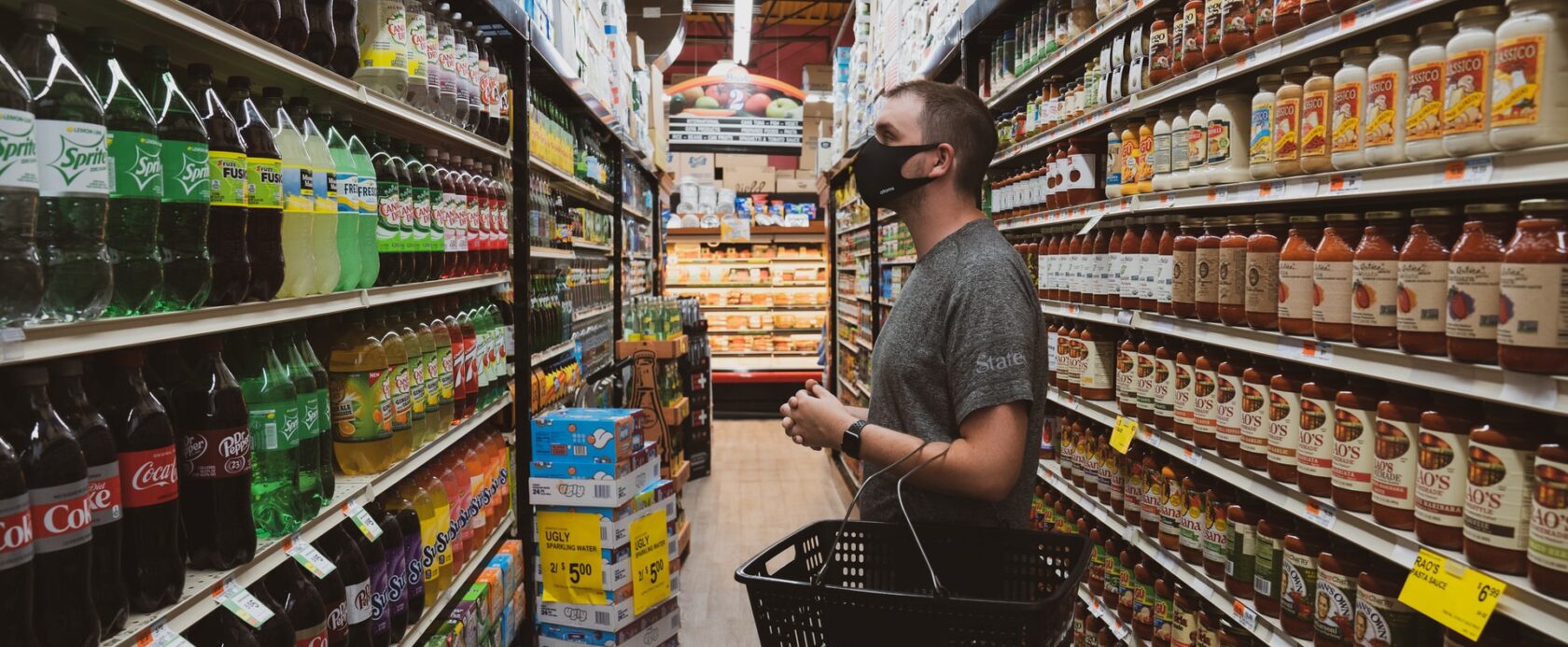
Keep Your Mask On
By Galen Lastko,
I will go ahead and concede that a few layers of cloth don’t exactly seem like that significant of a measure in the face of a global pandemic. However, I must admit that I am exceedingly good at being wrong about things as a human. While they’re not a perfect solution, months of live testing indicate quite clearly that masks go a long way in reducing the spread of COVID-19 when used properly and consistently.
Most types of properly fitted masks block larger droplets and usually don’t travel further than six feet.
While wearing a mask offers some protection to the wearer, remember that courage or confidence is no reason to avoid a mask when the principle reason for their implementation is to prevent those who may already be infected from transmitting the disease to others. When someone with COVID or another airborne respiratory disease exhales, moisture containing viral particles is emitted in droplets of various sizes. Don’t worry; it’s not just you. Most types of properly fitted masks block larger droplets and usually don’t travel further than six feet (hence the six feet of perimeter we’re all supposed to maintain), but smaller particles called aerosols are another story. These minute droplets are every bit as good at transmitting COVID-19 and can stay in the air for hours, just cruising around, depending on the ventilation.
Months and months of mask-wearing, hand-washing, and surface purification can cause even the most vigilant of us to slip up and get lax with the kinds of protective measures that have really taken the wind out of COVID’s sails. A recap and updated analysis of mask efficacy seem especially worthwhile as we head into our first COVID-19 winter and cases begin to mount again in what some are calling the long-expected “second wave” of infection.
In ascending order of usefulness, we will group masks into four categories:
- Minimal/Poor Coverage: This includes most improvised facial coverings, including the pulled up t-shirt or other non-secure methods of covering the face. While it stands to reason that a layer of cloth is a layer of cloth, at least two layers are recommended to provide an adequate shield against moisture particles. In addition, masks with exhalation valves or vents allow moisture particles to escape and are not effective as a mask for these purposes.
- Moderate Coverage: Face shields, neck gaiters, and bandannas are better than an unsecured or wholly improvised mask and may be as effective as cloth masks, but there’s not enough data one way or another to provide a definite answer. As a backup or spare, or in tandem with a more efficient mask, these kinds of masks might be good enough…but better not to risk it.
- Adequate/Good Coverage: The minimum for socially distant interaction, this covers a tight-fitting and clean bandanna or cloth mask with elastic bands. For most of us, most of the time, this is perfectly good enough. If you’re going to be in unavoidably close contact with others, this will not be enough protection, but unless you’re working in the healthcare industry, there’s not a lot of reason to be getting that close to strangers at this point.
- Excellent/Medical-Grade Coverage: These include the now-famous N95 mask and various other masks intended for use in a medical situation. Unless you are over 60, feeling sick, or otherwise immune-compromised, DO NOT wear these masks unless directed to do so by your healthcare provider, as supplies are limited and best reserved for those at the most significant risk of infection or transmission to others. Note that medical-grade masks are the only masks covered here which provide optimal protection from aerosols.
The first and most crucial step in making any mask effective is to ensure that the mask snugly covers at least the nose, mouth, and chin of the person wearing it. Symbolic placement of the mask on the general lower half of the face area is not comparable in terms of protection, although attempts to make the mask fashionable are entirely understandable: the ninja look is starting to feel a little dated.
Try your best to recontextualize this time of confinement into the altruistic and rational measure it truly is.
While numerous references indicate that a properly fitted medical-grade mask provides at least a 95% elimination of exhaled viral particles, that still means there’s a 5% chance that any mask will still allow an infected wearer to transmit COVID-19 to others. There is no magical protection other than strict isolation, which is still the only reasonable measure in the case of those most at risk. As time wears on, it is too easy to start to feel human: we miss our families, friends, and the connections with our community that form the foundation of rural life. Stay strong and hunker down as best you can, and try your best to recontextualize this time of confinement into the altruistic and rational measure it truly is.
Galen Lastko, submitted on behalf of the SoHum Health’s Outreach department.
Related: Colds & Flu, Community, COVID-19, News, SoHum Health, Wellness